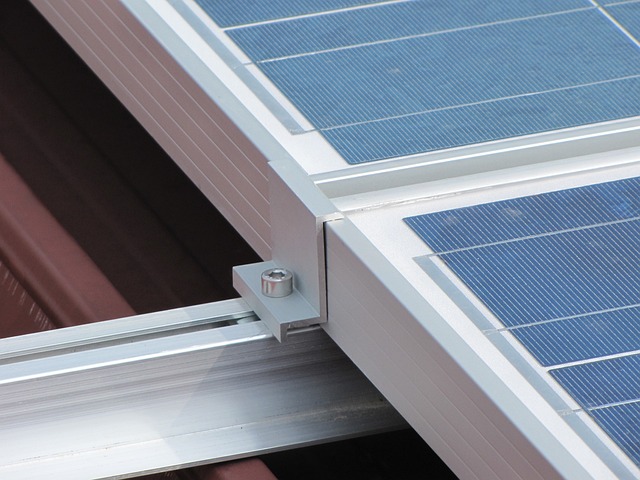Solar energy through solar thermal systems is a transformative approach for renewable heating, efficiently harnessing solar radiation with technologies like flat-plate collectors, evacuated tube collectors, and concentrated solar power (CSP) plants. These systems are not only eco-friendly but also cost-effective, offering domestic hot water, energy savings, and a reduction in fossil fuel consumption. In commercial settings, they offer greater potential for energy savings and environmental benefits, especially in regions with high solar irradiance. Advanced systems can be integrated with building management systems to optimize performance throughout the year. With global support through incentives and tax credits, solar thermal systems are poised to become a fundamental part of sustainable energy practices.
The design and materials of solar thermal collectors are crucial for maximizing efficiency and adapting to various climates and applications. Evacuated tube collectors minimize heat loss with vacuum insulation, while flat-plate collectors use selective surface coatings to maintain high efficiency throughout the year. These systems incorporate glazed covers and selective surfaces that capture solar energy and release waste heat efficiently, with reflectors and selective coatings enhancing their performance.
Integrating these systems into existing buildings requires careful planning, considering the structure's design, orientation, and compatibility with current plumbing and heating systems. Aesthetic integration is also key to maintaining architectural integrity. Economically, solar thermal investments promise significant savings by lowering utility bills and offering a stable energy cost, with a return on investment comparable to traditional heating methods. Environmentally, they reduce carbon emissions, conserve water, and contribute to global sustainability goals. By promoting energy independence, these systems protect against fuel market volatility, reduce reliance on imported fuels, and enhance national security, making them a strategic choice for a diversified and resilient energy portfolio.
Solar thermal systems represent a pivotal advancement in leveraging solar energy for heating water and spaces efficiently. This article delves into the transformative potential of these systems, exploring their mechanisms, installation, and the myriad benefits they offer over traditional heating methods. By integrating cutting-edge designs and components tailored to maximize efficiency and performance, homeowners and businesses can significantly cut costs while making strides towards environmental sustainability and energy independence. Join us as we shed light on how solar thermal technology is reshaping the landscape of renewable energy solutions.
- Understanding Solar Thermal Systems: Harnessing the Sun's Heat for Domestic and Commercial Applications
- The Mechanics of Solar Thermal Collectors: Designs and Components that Maximize Efficiency and Performance
- Installation and Integration: Best Practices for Incorporating Solar Thermal Systems into Existing Structures
- Cost-Benefit Analysis: Economic, Environmental, and Energy Independence Advantages of Transitioning to Solar Thermal Heating Solutions
Understanding Solar Thermal Systems: Harnessing the Sun's Heat for Domestic and Commercial Applications

Solar thermal systems represent a pivotal innovation in harnessing solar energy for heating water and spaces, offering a sustainable alternative to conventional heating methods. These systems convert sunlight directly into usable heat through various technologies, including flat-plate collectors, evacuated tube collectors, and concentrated solar power (CSP) plants. The efficiency of these systems lies in their ability to capture solar radiation effectively; the collected thermal energy can then be utilized for a multitude of applications, from domestic hot water supply to commercial space heating and industrial processes.
The integration of solar thermal systems is not only beneficial for reducing carbon footprints but also economically viable over time. In domestic settings, these systems can significantly lower utility bills by providing a substantial portion of the necessary hot water, thereby reducing reliance on fossil fuels. For commercial establishments, particularly in regions with high solar irradiance, the scale of energy savings and environmental impact is even more pronounced. Advanced systems can integrate with building management systems to optimize performance throughout the year, adapting to changing weather patterns and ensuring a consistent supply of thermal energy when needed. As governments worldwide incentivize the adoption of renewable technologies through subsidies and tax credits, solar thermal systems are poised to play an integral role in the global transition towards cleaner and more sustainable energy sources.
The Mechanics of Solar Thermal Collectors: Designs and Components that Maximize Efficiency and Performance

Solar thermal systems harness solar energy to heat water and spaces efficiently, representing a sustainable alternative to conventional heating methods. The mechanics of these systems are rooted in the design and components of solar thermal collectors, which are pivotal in maximizing efficiency and performance. There are several types of solar thermal collectors, each tailored to optimize energy capture depending on the climate and application. Evacuated tube collectors, for instance, offer high efficiency due to their ability to minimize heat loss through vacuum insulation, making them particularly effective in areas with significant temperature variations. Flat-plate collectors, on the other hand, are designed with selective surface coatings that absorb a broad spectrum of sunlight while reflecting unwanted infrared radiation, thus maintaining high efficiency levels throughout the year.
A key component in these systems is the solar thermal collector’s glazed cover or absorber plate, which plays a crucial role in capturing and transferring solar energy. The design often includes an insulated cover that allows sunlight to enter while preventing heat from escaping. Beneath this cover lies the absorber plate, where solar energy is converted into usable heat. The plate’s selective surface technology is critical; it’s engineered to absorb short-wave radiation (sunlight) effectively but release long-wave radiation (heat) efficiently, ensuring maximum energy transfer without overheating the collector. Additionally, the integration of reflectors and selective coatings in the design helps to maximize the solar thermal collectors’ efficiency by directing sunlight onto the absorber plate and reducing heat losses. These sophisticated mechanisms and materials contribute to the overall performance of solar thermal systems, making them a highly efficient and sustainable solution for heating water and spaces.
Installation and Integration: Best Practices for Incorporating Solar Thermal Systems into Existing Structures

When integrating solar thermal systems into existing structures, careful planning and consideration of the building’s design and orientation are paramount. The rooftop is often an ideal location for installing solar collectors due to their proximity to the heat demand source—be it for domestic hot water or space heating. To maximize efficiency, it’s essential to assess the roof’s structural integrity and ensure it can support the additional load without compromising its stability. Additionally, the orientation and angle of the collectors should be optimized to capture the most solar radiation throughout the year. This involves a detailed analysis of sun path diagrams specific to the building’s geographic location.
During the integration process, it’s crucial to maintain the aesthetics and architectural integrity of the structure. This can be achieved by selecting collectors with an unobtrusive design that complements the roof’s appearance. Furthermore, the system should be seamlessly connected to the building’s existing plumbing and heating infrastructure. This requires precise engineering to prevent thermal losses and ensure a tight insulation envelope around the solar components. Collaboration between experienced engineers, architects, and installers is key to successful implementation. By adhering to these best practices, buildings can leverage solar energy effectively, reducing energy costs and carbon footprint while maintaining functionality and style.
Cost-Benefit Analysis: Economic, Environmental, and Energy Independence Advantages of Transitioning to Solar Thermal Heating Solutions

Solar thermal systems represent a strategic investment in sustainable energy practices, offering a trifecta of economic, environmental, and energy independence benefits. From an economic standpoint, the initial investment in solar thermal technology is offset by reduced reliance on fossil fuels, which translates into long-term savings on heating costs. The systems harness renewable solar energy to heat water and spaces efficiently, thereby minimizing utility bills and providing a predictable energy cost over time. Furthermore, the durability and low maintenance requirements of these systems contribute to their economic viability, often with payback periods that rival conventional heating methods.
Environmentally, solar thermal systems significantly reduce carbon emissions associated with traditional heating sources. By leveraging the abundant and clean energy from the sun, these systems curtail greenhouse gas emissions, contributing to the mitigation of climate change. The reduced environmental footprint extends beyond carbon dioxide reduction; it also includes decreased consumption of water in comparison to conventional systems. Additionally, the adoption of solar thermal solutions aligns with global sustainability goals, promoting a transition towards renewable energy sources that protect ecosystems and preserve natural resources for future generations. Energy independence is another critical advantage, as these systems diversify energy supply portfolios, reduce vulnerability to fuel price fluctuations, and enhance national security by lessening dependence on imported fuels. The integration of solar thermal technology is a pivotal step towards achieving energy autonomy and resilience in the face of an evolving global energy landscape.
Solar thermal systems represent a prudent investment for those seeking to harness solar energy effectively for heating water and spaces. By understanding their mechanics and optimal design components, as detailed in this article, users can maximize efficiency and performance. The process of integrating these systems into existing structures is both feasible and beneficial when executed according to best practices outlined herein. Furthermore, the cost-benefit analysis underscores the economic, environmental, and energy independence advantages associated with transitioning from traditional heating solutions to solar thermal technologies. As a result, embracing these systems not only aligns with sustainable development goals but also offers tangible savings and sustainability for homeowners and businesses alike. The adoption of such systems is poised to significantly reduce reliance on fossil fuels and mitigate the environmental impact of energy consumption, making solar thermal systems a cornerstone in the renewable energy landscape.
